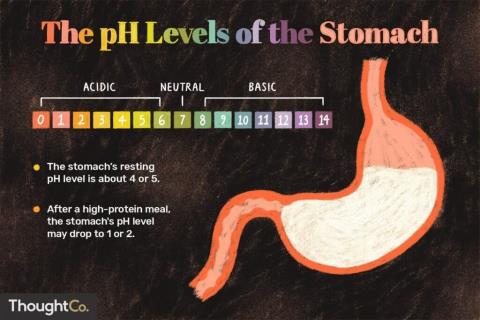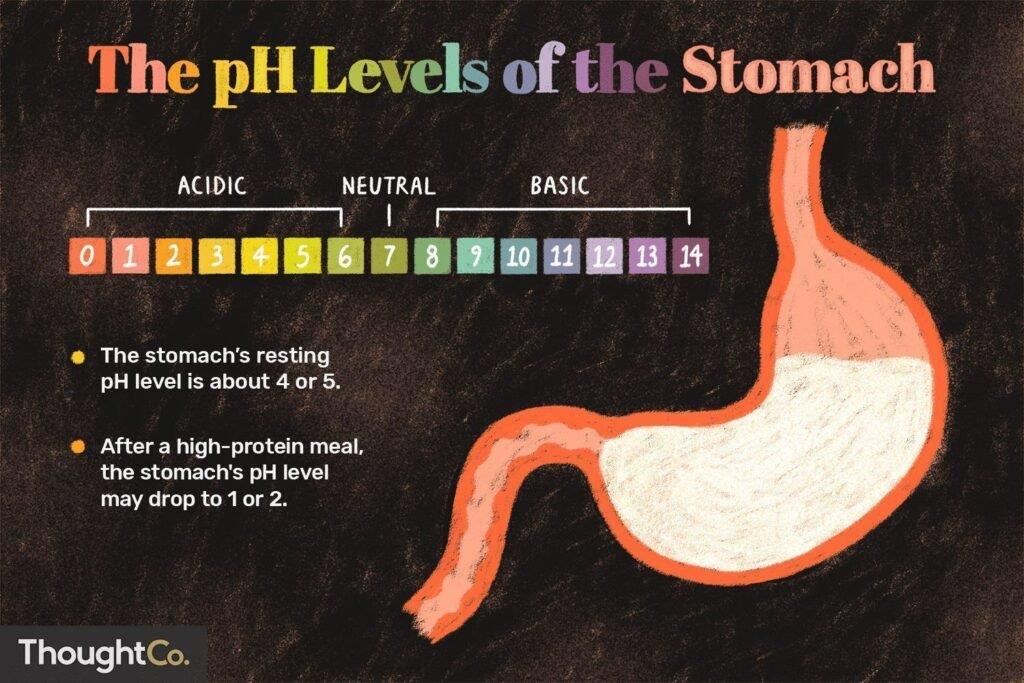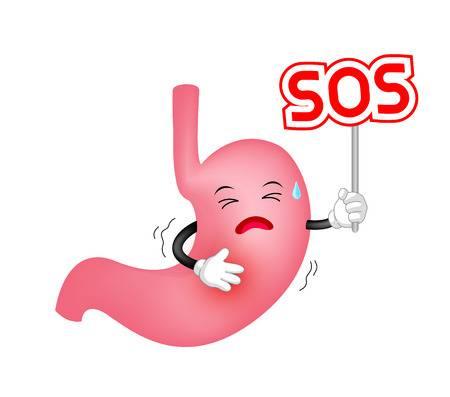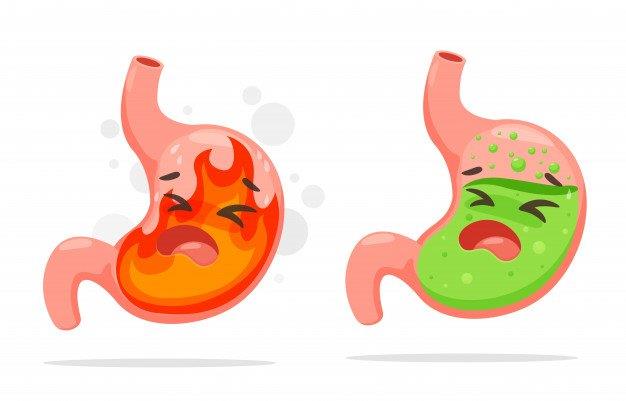Stomach acid and gastric juice formation

When studying digestion, especially the stomach, we are often interested in a factor that is the concentration of stomach acid. What is stomach acid or stomach pH? How do they affect the digestive system? Not everyone knows and understands. How the body works is quite complicated, but I hope the article below can help you understand in general how the stomach and gastric juice work, as well as the mechanism of gastric secretion. So please follow the article below.
content
- 1. What is stomach acid and stomach pH?
- 2. The role of stomach acid
- 3. Stages of stomach acid production
- 4. The story of gastric acid secretion
- 5. Explanation
- Epilogue
1. What is stomach acid and stomach pH?
1.1 Discovery history
- A lot of controversy when learning about the human body. Initially, there were two opinions about the role of the stomach: contract to mix food or secrete substances to digest food?
- At the beginning of the nineteenth century, an incident happened. A patient accidentally received a bullet that punctured his stomach but the wound did not heal. To be more precise, that perforation had accidentally formed an opening into the skin of the patient's abdomen. Sir William Beaumont and Alexis St, a Canadian doctor, followed this patient. By feeding the patient and opening the stoma directly for observation. As a result, they discovered that the stomach contains acid and other digestive substances, while the stomach muscle layer is almost inactive, whose main role is to store food.
- So you must have understood the results of the debate after so many years of doctors and scientists, right?
1.2 Digestive fluid of the stomach
- Gastrointestinal fluid is a mixture of many substances. There are many secretions before, during and always secreted when eating. These include gastric acid, proteolytic digestive juices, and glucide.
- Within the scope of the article, we will talk about the main topic of stomach acid. Stomach acid is hydrochloric acid (HCl). This is an extremely corrosive acid.
- Stomach acid is secreted by parietal cells in the stomach. Parietal cells have an H+ pump system that continuously pumps this ion into the gastric lumen.
- When we talk about acidity, we refer to the pH or rather the concentration of that acid. The stomach has a fairly high acid concentration, usually around 0.0150-0.0001 mol/L (corresponding to a pH of 1.5 to 3). With this high concentration, it can be said that stomach acid can corrode metals such as iron and aluminum.
2. The role of stomach acid
- Why does the human body need such a highly corrosive solution? Even food that needs to be digested probably doesn't need such a high pH. So what is the role of stomach acid?
2.1 The role of the frontline gateway
- The low pH level in the stomach plays a first and foremost role as a line of defense to prevent the penetration of pathogens.
- With high corrosiveness, almost all disease-causing organisms are destroyed. This may be an evolutionary advantage left to humans since the invention of food processing and preservation methods.
2.2 Digestion of food
- The most notable of stomach acids is their role in breaking down food. Thanks to stomach acid, the process of denaturing food can take place. The food we eat when exposed to stomach acid will break down into simpler substances for the body to absorb.
2.3 Catalyst
- Some digestive juices secreted by the body have a stronger hydrolysis effect of food than stomach acid. For example, pepsinogen is secreted by the main cells of the stomach. It has the ability to denature and degrade proteins extremely strongly. Thanks to the low acid concentration, pepsinogen can be activated to become an active enzyme.
- High acid concentration is also an environment to hydrolyze glucose into simple substances for humans to absorb.
2.4 Changes in gastric pH
Thereby, it can be seen that stomach acid plays a very important role in the digestive activity of the body. But the problem becomes complicated when stomach acid levels are often unstable. It can even cause you health problems.
- When pH > 4.5: Causes diseases such as indigestion, bloating, flatulence.. and creates favorable conditions for bacteria to multiply in the stomach and cause dangerous cancers.
- Acid concentration greater than 0.001 mol/l (pH < 3.5):="" causes="" ra="" the="" disease="" such as="" belch="" sour,="" burp ="" hot,="" bitter="" mouth,="" inflammation="" ulcer="" stomach="" stomach,="" pain="" stomach="" thick,="" reflux=" " reverse="" stomach="" thick…even="" even,="" if="" to="" love="" status="" residual="" acid="" long="" days= "" no="" engraved="" cure="" yes="" can="" cause="" ulcer="" bao="" death,="" output="" blood="" stomach=" ">

Stomach pH at rest is around 4-5 while during activity the pH can drop to 1-2
3. Stages of stomach acid production
According to current knowledge, there are 3 stages in the production of acid to promote the digestion of meals.
- Cephalic phase: About 30% of the acid is produced during this phase. They are stimulated by the smell and taste of food entering the stomach. This signal is emitted from the center in the brain via the vagus nerve X. Parietal cells will begin to pump H+ protein into the stomach.
- Gastric phase: At this stage, about 60% of the amount of acid is secreted. They are secreted continuously by the active activity of the stomach when this place comes in contact with food.
- Intestinal phase: The remaining 10% of the acid will be secreted when most of the semi-liquid weight of the food has moved down to the small intestine.
4. The story of gastric acid secretion
4.1 When the stomach is empty

The story begins when your stomach is empty
-
-
- So, usually, you don't always have a lot of acid in your stomach. Only when stimulated, cells that receive instructions from the nervous system begin to produce acid. This happens a lot when you are hungry.
- It all starts when you're hungry. From your mind you feel your stomach "growling". This rumbling is not caused by your stomach contracting, but rather by an empty stomach that contains nothing. At that point, nerve cells in the stomach send the first signal to the brain.
-
- During this phase, the glucose storage cells in the liver and muscles begin to break down the stored sugar. You won't feel this. When the sugar stores are low, the cells send another signal: Hey, you're hungrier, let's eat something!
4.2 When your nose starts working
- You are already feeling tired. If you try to endure it anymore, when the condition worsens, the body will continue to break down the stored glucose in the cells, and then the fatty acids and proteins. But don't wait until the fatty acids are broken down. The problem is that at this point, the stomach is empty, the amount of stored glucose also decreases. More and more cells are sending "lack of fuel" signals to the brain. Then you will feel even more hungry. The mind will think: what to eat now?
- It is at the very moment that you start thinking about what you eat now that you "turn on" the switch for the cephalic phase. Stomach acid begins to secrete. Your mind starts thinking about food. The nose begins to search for the aroma of the food. Scented baked goods are the ones that excite you the most. Your nose will be more sensitive at this point. It will not stop thinking but will start looking for familiar food flavors, especially those that you have tasted.
- When the nose meets its 'object', a light scent wafts through the air, the taste system kicks in. The taste buds say to the nose: Hey, you can smell it, give me a bite!
4.3 Eyes and ears also join the story
- Eyes also wake up. Eyes say: hey let me look around to see where there is food. Even your brain is more convenient. When it is thinking about the nearest food place. Almost a map and a whole list of choices appear in your brain. Well, you have unconsciously chosen X at the Y restaurant, followed the Z street to get there.
- Your ears also "pull" a bit of work. It searches for the “sizzling” sound of the cooking area and is extremely sensitive. Even the sound of the person next to you munching makes your stomach ache.
4.4 Then the tongue
- Then it was the greedy tongue's turn to wiggle. Saliva is automatically secreted. Well, this smell is delicious, add a piece of salt, a little pepper, add a little sugar, add a little flavor to the dish… The signals are sent from the brain's memory. How does this dish taste and how delicious it is. Saliva starts to work and secretes more and more. When you swallow saliva, it reaches the stomach.
4.5 To you stomach and intestines
- Stomach says: well at least there is something here. It is mildly active, secreting extra acids and digestive enzymes. Gently push each sip through the pyloric orifice into the intestines.
- The gut said: hey, the stomach is awake, let the intestines move a bit!
- And then the intestines wiggle and contract too. You're starting to feel your stomach growl.

Your stomach is "uncomfortable" now, let's go eat
5. Explanation
- That's why, when you have a nagging feeling when you're hungry, it's not in your stomach, but actually signals from a lower part, in your intestines. It should also be added that at this stage, up to 30% of gastric juice is secreted. Just by emptying your stomach, you are hungry and your body imagines that it has begun to secrete gastric juice. When you swallow the first sip of saliva, that's when phase 2 in the stomach begins to kick in and then slowly progresses to phase 3.
- So, when you're hungry, your body has subconsciously prepared for a meal, and somehow that mechanism inadvertently makes you uncomfortable when you're fasting and results in excess acid without food. Leads to the possibility of gastritis, pyelonephritis and enteritis due to the increased amount of acid in the stomach.
Epilogue
The human body is a relatively well-coordinated system. Little by little I hope to be able to convey to the reader in the simplest way how gastric juice and stomach acid are produced and secreted. Problems with increasing or decreasing stomach acid, I hope to have the opportunity to write more for you in future articles. Understanding how stomach acid is produced, we will have better habits in taking care of the health of the digestive system, especially the stomach and intestinal diseases that are common today .
Doctor Nguyen Quang Hieu